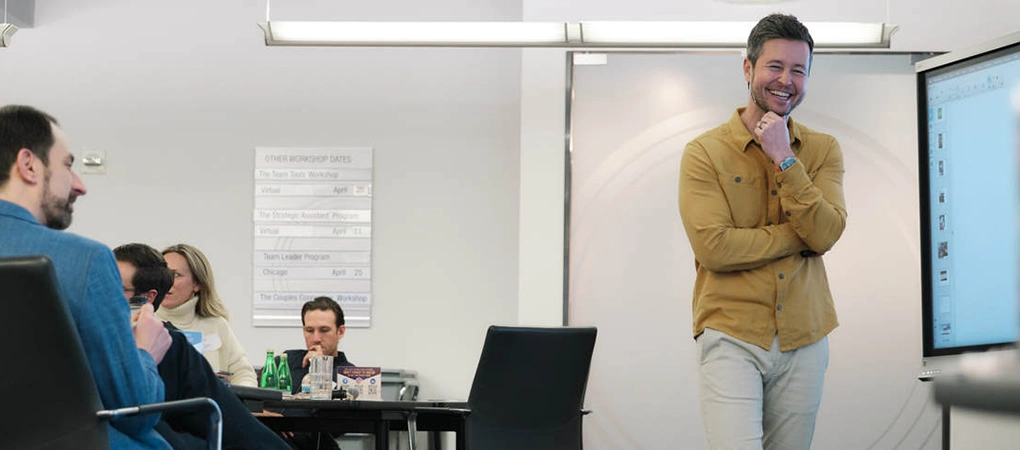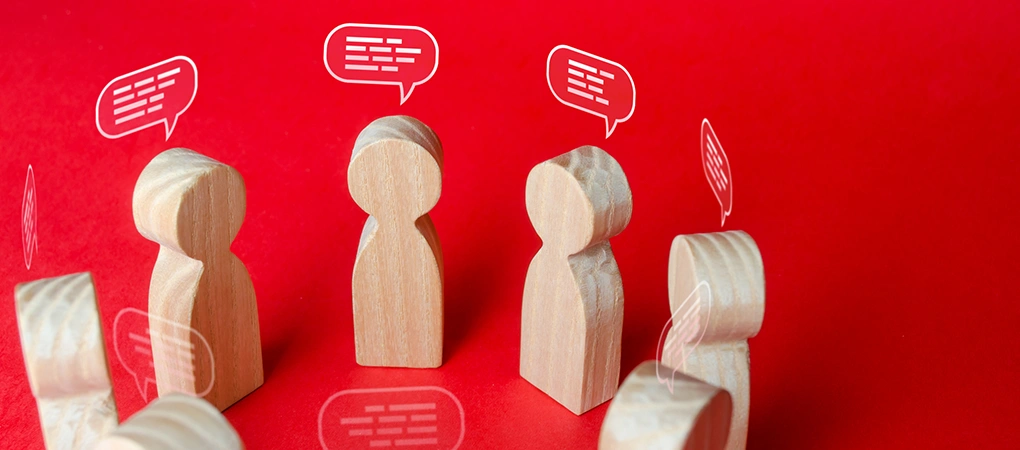How Poor Communication Affects Your Bottom Line—And What To Do About it
Shannon Waller

If you could implement just one thing into your company that would improve your teamwork, organizational speed and agility, and overall work environment, would you do it?
What if you knew you’d also see increased profit and results, productivity and innovation, and employee loyalty and customer satisfaction?
That’s just what Collaborative Way, a communication system based on five practices—Listening Generously, Speaking Straight, Being For Each Other, Honoring Commitment, and Appreciation and Acknowledgment—promises to deliver.

Intrigued? So were we.
The thing is, as all entrepreneurial companies grow, certain activities and habits become a part of your culture, but they don’t always facilitate your growth. At Strategic Coach, we’ve always had a very positive culture. We support everyone’s Unique Ability and Unique Ability Teamwork and invest in each other’s growth. We regularly do The Positive Focus, provide opportunities for goal setting and training, celebrate birthdays and babies, have fun company meetings, and give appreciation awards when people go above and beyond.
And yet for all that, for a time we still had one major challenge—we were too nice. We didn’t have the tools or context to address problems and issues head on, which meant people would start to do work-arounds and bypasses, both of which hamper productivity and are just plain inefficient. Or, people simply wouldn’t speak up because they didn’t want to upset anyone.
We needed a way to work with one another that would help us tackle challenging issues in a supportive way that would elevate our teamwork, not tear it down.
Thanks to a client’s recommendation, we found it in Collaborative Way. It allows us to Listen Generously with fewer filters (after all, it’s progress, not perfection we’re after!), Speak Straight, do Clean Ups with one another, be better at meeting our commitments and helping others meet theirs, and give meaningful appreciation. It’s deepened our relationships, helped us navigate tricky interpersonal situations, and sped up our teamwork.
One of the unexpected by-products is that people are also taking what they’ve learned home, transforming their personal relationships at the same time they transform their professional ones.
Please read on for a few key excerpts from my conversation with Lloyd Fickett and Krista Barbour as they share some highlights of Collaborative Way.
How did Collaborative Way come about?
Lloyd: The Collaborative Way was born out of working with a company that was in a very challenging situation. They were the world leaders in their industry. Their market was about to explode, and they realized that very large players like 3M and Cabot would be moving into their market as it exploded. And they knew they couldn’t compete with those larger companies on a basis of putting as much money into the market, or putting as many PhDs into the market to try to meet these challenges. They were working on, “How can we possibly continue to be the world leaders in the face of this challenge?”
They came to the conclusion that the only way they could do that is if they came up with an extraordinary way of working together. They approached me. I supported them in merging two of their companies back together. They had asked if I would work with them to develop this extraordinary way of working. It was like a dream project, absolutely.
We started taking it on. In the beginning, we did it so much as what would normally be the way you go about this, which is primarily building individual leadership skills, building individual communication skills, working to deepen commitment and change behaviors. We were making progress. It was a very positive thing, but when I looked at the challenge we were facing, I really had doubts that we were going to make it to this extraordinary level that we were going to need to be at. It was coming up against that, and that we had to break through, that’s foundational to The Collaborative Way. That’s to realize, if you want an extraordinary way of working together, then the way you can get there is you’ve got to call out how we are going to work together and then take on learning to work that way.
If the learning’s focused primarily at the individual’s growth, well you’re going to get a lot of that, but I’ve seen people with great communication skills, great leaders, who don’t work well together, and the company doesn’t get the benefit of all those skills and abilities that the individuals have. The breakthrough is that when you put more focus, you start with the focus on, “How are we going to work together?” and then you start to build mutual understanding and mutual commitment to that. When we looked at, well, “What would those small number of commitments be?” it just seemed so obvious. If we would listen generously to each other, speak straight to each other, really be for each other, honor our commitments, and each be a source of acknowledgment and appreciation up, down, across the organization—if we can come together that way, focusing those practices on what we’re here to accomplish together, what we’re up to, that’s how we can get to extraordinary.
Shannon: Listening Generously is the first premise, the first behavior, the first commitment that you make in The Collaborative Way. Can you define what Listening Generously is compared to perhaps its opposite? A little contrast might be useful here.
Lloyd: Well, a really simple example would be the difference between listening for the value in what someone’s saying versus judging what the other person is saying. It’s not listening to someone and thinking, “Oh, that’s a bunch of nonsense. There’s nothing of value in here. Here he goes again, or here she goes again.” That would be the ungenerous way of listening, and unfortunately very typical. Then the other one would be working hard to really listen for, “Well, what is the value? After all, he or she is on our team. There must be some value.” Very few people have no value to offer, so if I really listen, can I find that value? What if we all learn to listen to each other that way? That’s the object.
Shannon: You talk about filters and things that get in the way of Listening Generously. Let’s talk about that, particularly as it relates to listening for judgment versus listening for value. We do have these filters about people, right? Can you ever really get rid of them, or can you just put them aside?
Krista: The way that we see it is, it’s really hard to actually fully get rid of filters, but what we can do is, as we start to become more aware of what filters we have in place, like a particular filter that I might have for Lloyd, or a particular filter that I might have in particular situations, then I can catch it much faster when it does arise. Then, when I see it, I can set it aside, like, “Oh, there it is.” Then set it aside, and actually bring more curiosity to help me understand.
It’s especially useful when I notice myself starting to feel really negatively impacted by something somebody says. Then easily a filter can arise of bad intent, or “She’s not for my success,” or something like that. Rather than believing that, I can actually, “Oh, wait, wait, wait. Help me understand. Was this what you were just trying to say? Because it impacted me this way.”
Like what you read here? Find out how you can gain access to more amazing resources by downloading our Starter Kit today!
For the skeptics out there, what’s the real, tangible impact that you’ve seen with Collaborative Way?
Krista: There is this misunderstanding about collaboration and harmony and airy-fairy and nice nice. Some of the biggest skeptics, actually, when taking on the practice of The Collaborative Way, are often like, “Hmm, I’m not quite sure about this thing. It feels a little touchy feely.” In one company we worked with, the actual CFO was the guy that was really resistant to taking it on because he didn’t see how these practices really forward what we’re up to, even the bottom line. They really do impact the bottom line, and he’s now one of our biggest advocates because he’s seen the difference in how it impacts the bottom line.
Shannon: In that company, what happened?
Krista: In this company after a little over two years of taking on the practice, their revenue grew about 55%, and their profitability grew about 50%.
Then another company, they’re a boutique manufacturing company, in their first year of practicing Collaborative Way, they reported output increased by 20%, and their profits increased by almost 30%.
We can have this misunderstanding of airy-fairy, harmony, why take on these practices, but when you really look at what we’re doing together, it’s impactful.
Shannon: Thank you so much for sharing those stats because for anyone interested in those results, pay attention. I see the costs all the time of those miscommunication and miscues. It causes resentment and lack of communication. What I love is that this is a very clear, straightforward system to put in place that eliminates all of that.
The other thing I want to share, since we’re talking about results, is what some of the impacts are. There’s organizational speed and agility, which translates to results and profits. Teamwork leads to increased productivity and innovation. Then a really satisfying work environment—a satisfying work environment where people aren’t infighting. Politics is not the name of the game. They’re up to something meaningful and worthwhile. Everything I hear about the generation in the workplace now, meaningful work is so critical, but meaningful interactions as well, that fits in. That leads to employee loyalty and customer satisfaction.
Lloyd: It’s very real and tangible. Some companies, we first focus practice toward how we’re going to work together within the company, but that begins to spill out. It spills out into their families. It’s really always wonderful to hear those beautiful stories of how listening at home, and being for each other at home, has to show up with such a different kind of result. It’s so fantastic, and it starts to aim toward their customers. Then some of them even turn it into a very conscious and deliberate effort to alter how they work with their customers in their practice of the Collaborative Way.
To learn more about the five practices, listen now to Author Interview With The Collaborative Way Specialists.
Here’s to your collaborative team success!





